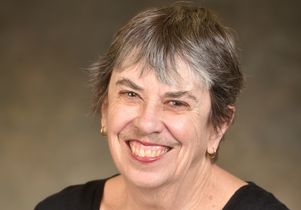Professor Stephanie Jamison to share how she finds women in ancient, often patriarchal, texts

Stephanie Jamison
For four decades, UCLA’s Stephanie Jamison has been somewhat defiantly seeking the stories of women among some of the oldest texts in the world. Jamison’s expertise lies in Indo-Iranian, especially Sanskrit and middle Indo-Aryan languages with an emphasis on linguistics, literature and poetics, religion and law, mythology and ritual, and gender.
Jamison will share some of what she has unearthed on April 3 as she delivers UCLA’s 126th Faculty Research Lecture titled “Looking for Women Between the Lines in Ancient India.” They will be names and stories of women we have likely never heard of before.
“It is often said that the kind of scholarship that I do, which is very traditional examination of written language, cannot be used to study women and marginal groups, because it’s just not there,” said Jamison, distinguished professor of Asian languages and cultures and also Indo-European studies in the UCLA College.
But Jamison would argue that the tools employed through traditional philology (the study of language in literary texts and other written records) are actually well suited for digging beneath the surface of text for exactly those stories, even among the works from colonialist and patriarchal cultures.
Even back as far as 1500 B.C. in India.
For 15 years, Jamison and her co-author Joel Brereton worked on a translation of the “Rig Veda,” India’s oldest Sanskrit text. Published in 2014, theirs is the first full English translation in well over a century of the text that is considered crucial to the understanding both of Indo-European and Indo-Iranian cultural prehistory and of later Indian religious history and high literature.
It’s an era and a place that essentially has no archaeology to help interpret meaning, so we are completely dependent upon text for context, Jamison said. She often summarizes philology as the work of “text and context.”
“In the Rig Veda there was a debate going on underneath the surface about the place of women in religious life,” Jamison said. “There are very enigmatic snatches of narrative about women or female goddesses or demigoddess and they are being deployed by two different sides of the debate as examples of either the terrible or wonderful things that will happen if you let women in. But none of this is actually conveyed on the surface.”
So looking for and finding women in these ancient texts requires burrowing in as deeply as possible, she said, starting with a very close attention to grammar, literary devices and rhetorical devices, alongside trying to uncover the religious system and whatever we can uncover about history.
Jamison was trained as a historical and Indo-European linguist, and earned her doctorate from Yale in 1977. She’s been teaching at UCLA since 2002. She regularly teaches courses in Sanskrit, Middle Indo-Aryan, and old Iranian language and literature, Indo-European and Indo-Iranian linguistics, and undergraduate courses on classical Indian civilization.
Jamison said she also enjoys teaching in a freshman cluster course called “Neverending Stories: Multidisciplinary Perspectives on Myth.”
The Faculty Research Lecture — a UCLA tradition since 1925 — is free and open to the public and will be held on April 3 at 3 p.m. in the Schoenberg Music Building.



